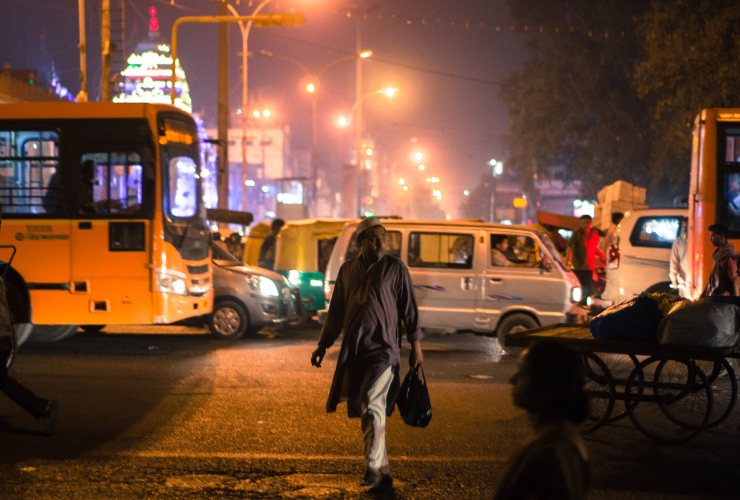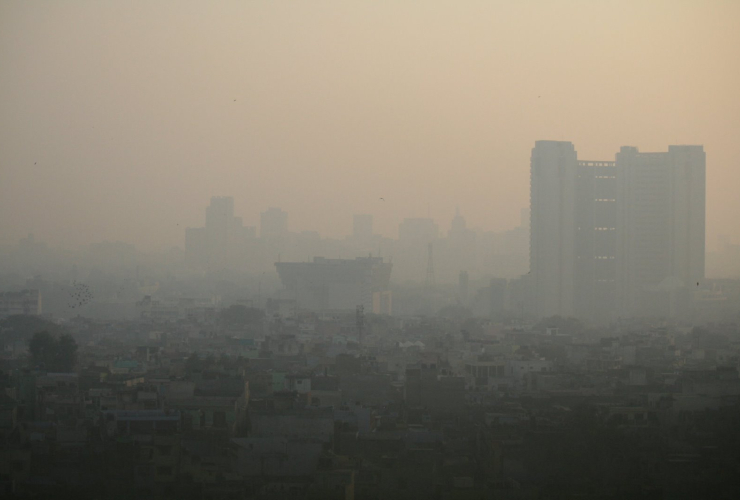What’s invisible to the naked eye and more deadly than traffic accidents?
Surprise — it’s air pollution.
While exposure to air pollution is the fourth-leading risk factor for death worldwide, it remains a silent public health emergency, as noted by WHO director-general Dr. Tedros Adhanom Ghebreyesus.
Let’s face it — air pollution is not a particularly sexy issue. It is difficult to touch or see, and its adverse health effects are not always immediate. In short, it’s easy to disregard.
The Sierra Club Canada Foundation is looking to change this. To bring the issue of air pollution to the forefront, the Foundation’s Ontario chapter started a campaign in 2020 called Breathe Easy.
The campaign’s aims are twofold:
- To better understand citywide air quality by supplementing permanent monitoring stations with low-cost monitors; and
- To empower action on air pollution at all levels.
Understanding local air quality is important — after all, it’s difficult to develop a solution if you don’t understand the problem. While permanent air quality monitoring stations are extremely valuable, they’re often scarce. Meanwhile, air pollution levels can vary significantly across both space and time.
This is where citizen science comes in. Since its inception, Breathe Easy’s team of citizen scientists — armed with handheld air quality monitors — have measured pollution levels across the city of Ottawa, where the project is being piloted. The goal of Breathe Easy is to bring awareness to the issue of air pollution and inspire action at all levels — both in the lives of individuals and within the broader community.
Our air quality monitors measure a specific type of air pollutant known as PM2.5. These particles are extremely small, which allows them to penetrate deep enough to enter the bloodstream. It is the most harmful air pollutant to human health and is responsible for the majority of deaths.
Breathe Easy is using Ottawa to pilot a model that can subsequently be applied elsewhere. The reality is air pollution isn’t an issue constrained to a specific city — it’s an issue that affects all Canadians. Clean air is important for us as individuals, for our children, for our parents, and for our friends.
Most folks are reminded about air pollution when air quality advisories are issued — for example, during wildfires. Advisories are intended to help residents reduce their exposure to high levels of air pollution. While actions taken to mitigate exposure (e.g. staying inside and running an air purifier) may improve the quality of the air we breathe in the short term, they are not long-term solutions.
Additionally, the available research suggests that even low levels of air pollution can lead to adverse health effects. This finding has two implications. First, it suggests that a limited focus on air pollution during poor air quality episodes overlooks the broader problem.
Second, it suggests that even small decreases in air pollution — particularly when levels are already low — can lead to marked improvements in our health (among other benefits).
Together with our communities and our governments, we must shift our focus away from dealing with the repercussions of air pollution and work towards fixing the cause of the problem.
The good news is we have the power to drive meaningful, positive change. The great news is we can accelerate climate action in the process. While often tackled separately, the two phenomena are intimately intertwined. Instead of focusing on solutions that target either problem, we can make huge strides forward by focusing on strategies that tackle both air pollution AND climate change. These are solutions that we’re advocating for with Breathe Easy.
Individually, we can drive change by modifying our behaviours. We can start small — we can install solar panels, buy an electric vehicle, ensure adequate home insulation, and run errands by walking or biking.
Collectively, there are many things our political leaders can and must do to catalyze the systemic changes needed. This includes electrifying transportation, replacing fossil fuels with renewable energy, and redesigning our urban areas to promote active travel.
COP26 was a poignant reminder that collaborative action is imperative to combat the climate crisis. To shift the tide on climate change and air pollution, we have to collectively take a stand. By deploying strategies that have co-benefits for both air pollution and climate change, we will in turn improve public health.
What can you do to spur these large-scale changes? Make your voice count. Use it to advocate for clean air and a healthy planet for future generations. Volunteer. Attend a rally. Call on politicians to prioritize a sustainable future and to lead our communities.
More and more people are committing to action. Will you join us?
***
The Breathe Easy campaign is carried out in co-operation with Ecology Ottawa and with funding from the Ottawa Community Foundation. The campaign is currently in the process of expanding, both within and beyond Ottawa.
To learn more or to get involved, visit: https://www.sierraclub.ca/en/breatheeasy-campaign






Comments